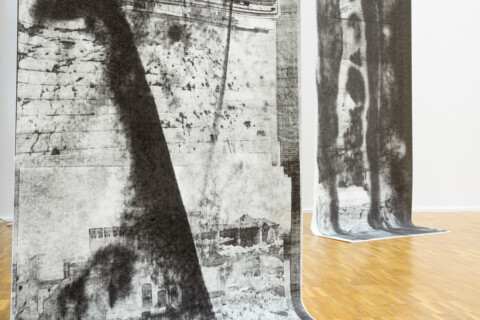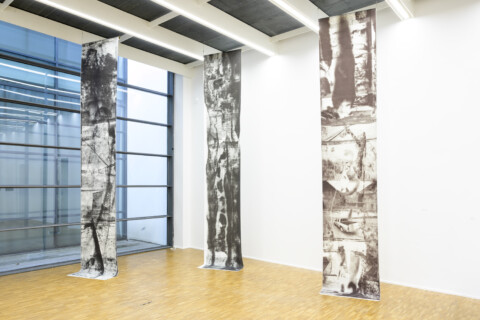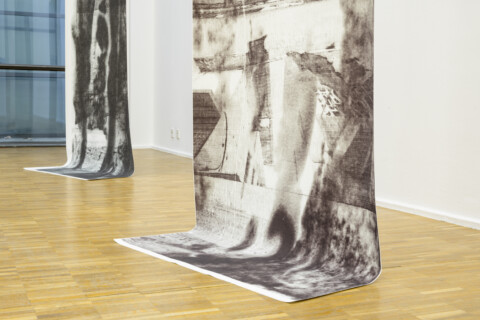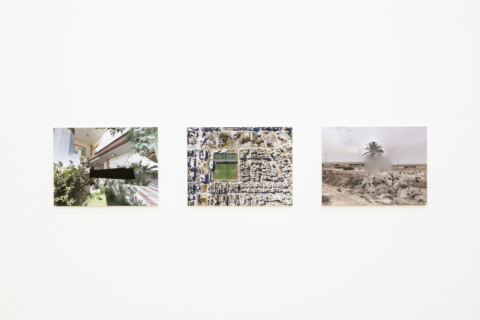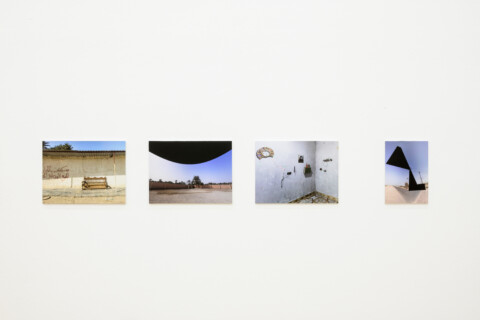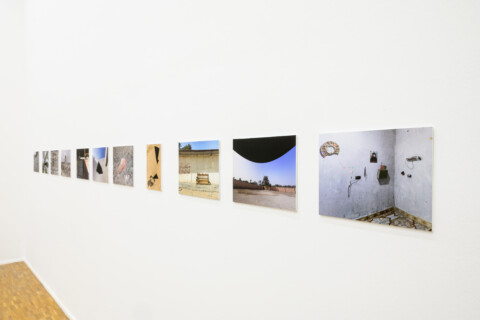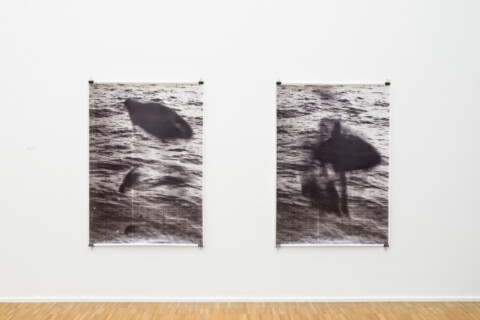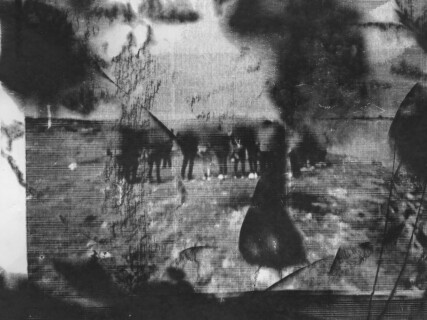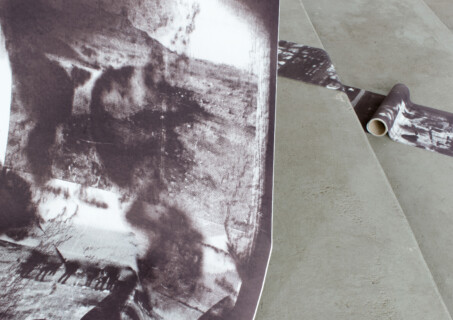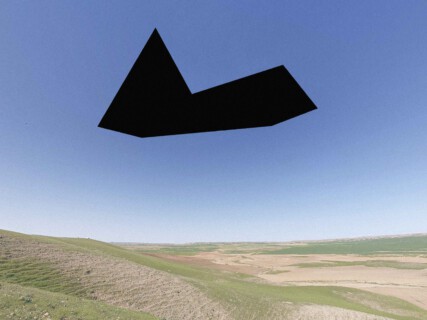Raisan Hameed deals with the connections between war, migration and memory on the basis of personal experiences. He explores the effects of historical and geopolitical events on individual and collective history in private and public, analogue and digital image archives.
In Embers of Narratives, the artist examines the traces of destruction left behind by violent conflicts in Iraq and his home town of Mosul. The expansive installation consists of printed lengths of fabric showing images of landscapes, houses and people. For this purpose, Hameed uses screenshots found in Google Street View. He alienates his source material in several steps, processing the surface to create fire-like effects. It is left to chance which pictorial elements are visible in the final version and how the image narrative changes as a result of the artist’s intervention in the material. In this process, destruction becomes a metaphor for the cycle of transience and new beginnings.
Hameed has worked through the entire map of Iraq on Google Maps to create an archive consisting of hundreds of screenshots. It tells of war, conflict and the destruction of the environment, but also of reconstruction, everyday life and identity. In Iraq, the 360-degree views are not uploaded to the platform by the company itself, but by private individuals. Hameed is particularly interested in the errors and empty spaces he comes across during his research, for example pixelated or black areas. As part of the exhibition, Hameed presents his book Pixels of Memories, in which he has compiled parts of this archive.
Raisan Hameed works with various media, including photography and film. He studied at the Mosul University College of Fine Arts and the Academy of Visual Arts Leipzig. Embers of Narratives is the final project in his master student programme with Prof. Tina Bara. Hameed’s work has been shown at numerous national and international exhibitions and was nominated for the Prix Photoforum Biel in 2024.
